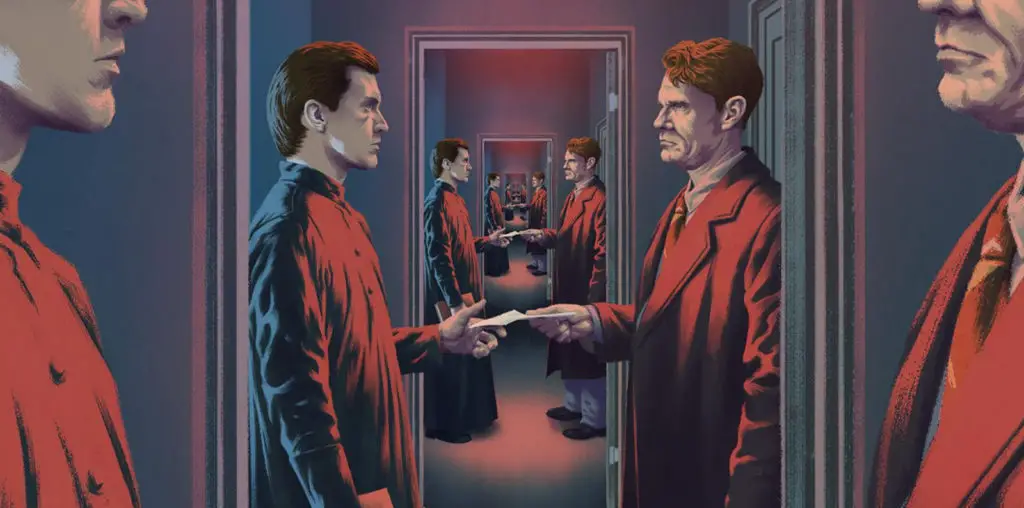
Jet (Mark Scarboro) is sitting in his car, preparing to kill himself with the gun in his hand. His plans are interrupted, however, when he sees a young girl (Rachel St. Gelais) get kidnapped by some men driving a white van. Moved to action, Jet drives off after them.
If the synopsis sounds familiar, it’s because I’ve already reviewed a version of this film before. Jet (The Screenplay) is apparently a version that the filmmakers shot as a form of experimental, visual screenwriting; rather then pen a script outright, just shoot something on the fly and put it together in post. This one wasn’t meant to be more than a blueprint for what could come, considering it was shot all in one day, and with a very limited budget ($200 compared to the other version’s $10,000, if IMDb trivia is to be believed), and thus two versions of the film were made. For me at least, the low budget experimental approach yielded a better film.
One of my original criticisms of the film was that, in the second half of the film, the movie seems to take place in a contrast-less magic hour. It deadened the image, robbing the film of any visual flair. In this one, however, the timing of film is slightly different and the film contains significant contrast and depth. You can make out what is going on better, and it has a power to the image.
The editorial rub is that the time of day doesn’t entirely match up; what appears to be early sunset suddenly gives way to a much darker evening, but considering the reasons behind this version’s existence, the filmmakers obviously weren’t all that concerned about perfectly matching; this version wasn’t supposed to be one that got around.
This film is also visually interesting in other ways that connect with the narrative. For example, in the opening, when Jet is contemplating suicide, he sits in a dirty car, the window streaked with dirt that didn’t quite wash off in the rain. It elevates the scene by connecting the emotional state of the character with the scene’s setting. The previous version had pristine, bright and gorgeous greenery in the background during this sequence, and while it worked in a similar way due to the contrast of his despair amidst so much beauty, I’ll admit I like the character of the dirt and potential rain more.
As far as pacing goes, this version is also about two minutes shorter, for better or worse. For better, the short really moves and the audience attaches more to the urgency of Jet’s journey. Again, the pacing elevates the intensity of events. For worse, however, sometimes it feels too rushed. Like maybe the difference is a matter of 15-30 seconds, but, if I remember correctly, his move from suicidal depressive to potential hero was a slower one in the other version. That said, however, the pace, ignoring the existence of the other cut, truly does work here.
Narratively, there was always an ambiguity to the film’s climax, and that still exists here. However, there is an additional shot that gives pause, and makes Jet’s actions that much more questionable all around. The ending is still open to some debate, but I feel like there’s more meat to chew on now.
While it has happened, from time to time, that I’ve reviewed alternate cuts of films (more so when I was a post-production supervisor or editor than as a critic), it’s not very often that I find an early rendering of the film, a first draft of sorts, that much better than what was presented as the final. But that’s the case here, where I found Jet (The Screenplay) to be a significant improvement over Jet (The Film). Still not without its problems, but with this version those problems stem, again, from the fact it wasn’t supposed to be the representative option. However, now that it is out there too, it’s open to comparison for everyone, and I know where I fall in the debate of which is an overall stronger short film.
This film was submitted for review through our Submission for Review system. If you have a film you’d like us to see, and we aren’t already looking into it on our own, you too can utilize this service.
